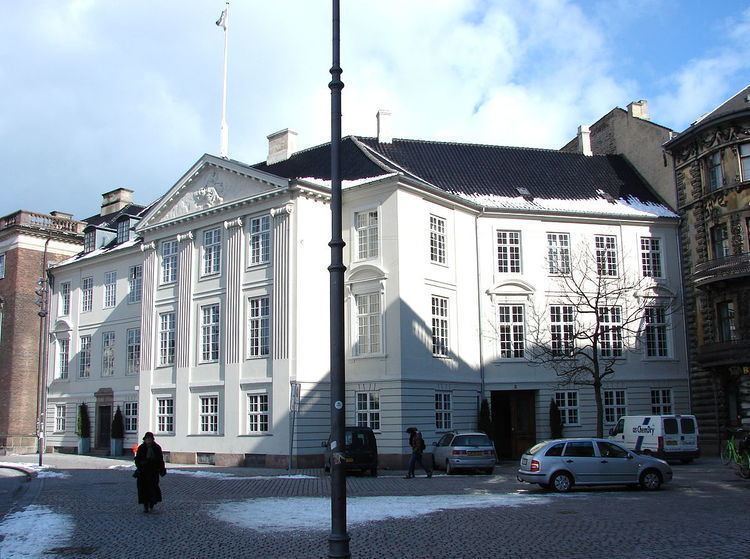Completed 1780 Owner Karberghus Construction started 1779 | Opened 1780 Architectural style Neoclassical architecture | |
 | ||
Similar Tivoli Gardens, Dyrehavsbakken, Tivoli Friheden, Fårup Summer Park, Legoland Billund Resort | ||
The Harsdorff House is a historic property located on Kongens Nytorv in central Copenhagen, Denmark. It was built by Caspar Frederik Harsdorff in 1780 and was in the same time to serve as inspiration for the many uneducated master builders of the time.-
Contents
History
Caspar Frederik Harsdorff became professor of perspective at the Royal Danish Academy of Fine Arts in 1766. In 1770 he succeeded Nicolas-Henri Jardin as royal building master and the following year he took over his residence in the south wing of Charlottenborg Palace.The Royal Academy's secretary, C. E. Biehl, had a residence next to the palace. His daughter, Charlotte Dorothea Biehl, spend some of her childhood in the building. After Biehl's death the worn-out building was designated for demolishion and Harsdorff was consuted on the matter. He proposed that the site was given to him and he would then build a house which could serve as inspiration for the builders of the increasing number of bourgois houses in the city. Architects who had studied at the Academy were in general only used by the state and members of the aristocracy. The king accepted the offer. Construction began in 1779 and was completed in 1780.
A Frenchman, Eugen Vincent, who had previously served as cook for Prince Ferdinand, opened Restairant Vincent in the building in the first half of the 19th century. The restaurant was later operated by his widow Eva Severine Vincent (née Rasmussen) and son Alezander Vincent under the name Madame Vincent. It was frequented by Jules Verne during his visit to Copenhagen in 1861.
The Ministry of Foreign Affairs was based in the building from 1864 until 1923, hvor 1983 when it relocated to Christiansborg Palace and the Yellow Mansion in Amaliegade. The building was restored by Fogh & Følner in 1999.
Architecture
As Jardin's successor,c. f. Harsdorff favoured French classicism inspired by ancient Greece and Rome.
The odd-shaped corner site inspired Harsdorff to build a property with three different model facades. The more monumental, central section is decorated with Ionic order pilasters and crowned by a triangular pediment with relief decoration.
The house came to serve as inspiration for hundreds of houses in the rebuilding of Copenhagen during the years after the Great Fire of 1795.
Today
The building is owned by Karberghus. The tenants include the IT consultency Nine (No. 3-5, 1st floor) and Russel Reynolds Associates (No. 3, 2md floor)
